

I collect US Plate Number Coils and have noticed that most of Sweden's stamps come in coil varieties. Do they also have plate numbered coils like US coils??
Sweden Coil Stamps:
Sweden's very first coil issues were made by gluing together fully perforated sheets of stamps and cutting them into rolls -- there was no attempt to slice nice neat edges between the rolls. It was not until 1920 that Sweden started to issue coil stamps that looked like coil stamps; with only two sides perforated. This was the start of the "bandmarken" (roll or coil stamps) era of Swedish philately.
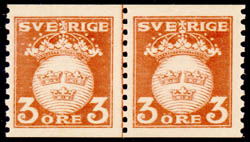
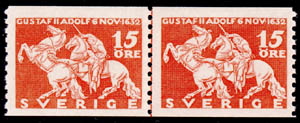
A great surprise to many American collectors is that in 1920, the Swedish post office started using an American Stickney stamp printing press... and thus began the era of LINE PAIRS on Swedish stamp issues, lasting until the end of 1936. The final run of the Stickney press was for the 35 Ore, King left profile stamps. The press used two half cylinders; the plate (cylinder) join lines thus appeared twice for every full cylinder rotation. All the stamps of the era were printed on this press, thus line pairs can be found on both the coil and sheet stamps (even the sheet stamps used to make booklets) of every stamp issue, with one exception. The 1924 World Postal Congress and UPU issues were printed using only half-cylinders each, thus the stamps of both issues were printed with every full revolution of the printing cylinder. I believe the only surviving combination pairs (with plate join line between) are in the Swedish Postal Museum. Line pairs of the coil stamps are fun to collect and a considerable challenge to find. Line pairs of the perforated 4-side stamps are extremely difficult to find! To my knowledge, there has never been a catalog or price list issued for these line pairs. They are NOT widely collected in Sweden and apparently early collectors considered the line to be "disfiguring". Mint examples were consumed for postage and used examples were often simply discarded.
From 1920 to today, the coil stamp has been Sweden's principal production format. Coils provide ease of dispensing for the postal workers and supposedly ease of use for the patrons.
In earlier days, the preferred collecting style in Sweden was to collect the coils in 5-strips. Having seen such collections, I can say that the visual effect is dramatic! However, as the cost of postage increased, and printed albums became more prevalent the 5-strips fell out of favor.
The American style of collecting American coil stamps has a long tradition of collecting in pairs and/or line pairs. (It is interesting to note that with the advent of American coil plate numbers, those are now often collected in 5-strips!) However, when it comes to (anybody) collecting Swedish coil stamps, there has never been much interest in collecting them in pairs. Most collectors collect (and all printed albums show) them as single stamps.
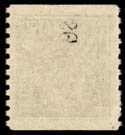
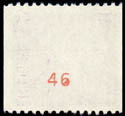
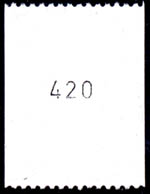
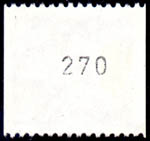
There is another collectible aspect of Swedish coil stamps: back numbers. Starting on 16 September 1920, numbers have been printed on the backside (on top of the gum) of Swedish stamps. Prior to the 1970s, the numbers were printed on the rolls of 500 stamps (not the rolls of 100 stamps), presumably for use by postal clerks. A number was printed on the back of every 20th stamp; "2" on the 20th stamp, "4" on the 40th, etc. Examples of these early back-numbered stamps are very scarce. I have seen examples in either red or black from the 1920s to the 1950s, and only black since then, in various type styles. Starting in the 1970s, however, the numbers appear every 10 stamps and are specifically for inventory counting use by postal clerks. Though German coil stamps with back numbers (every 5 or 10[?] stamps) are avidly collected, this style has not (yet?) caught on for Swedish stamps.
Acknowledgments:
www.jaysmith.com published March 27, 2002, Scandinavian Philatelic E-News, additional information from Ross Olson.
Additional Information Sources:
PostryttarenPostmuseum Yearbook, 1995, page 44.
Sveriges Frankotecken Handbok 1961, Volume I, page 16.
2008 Archive files